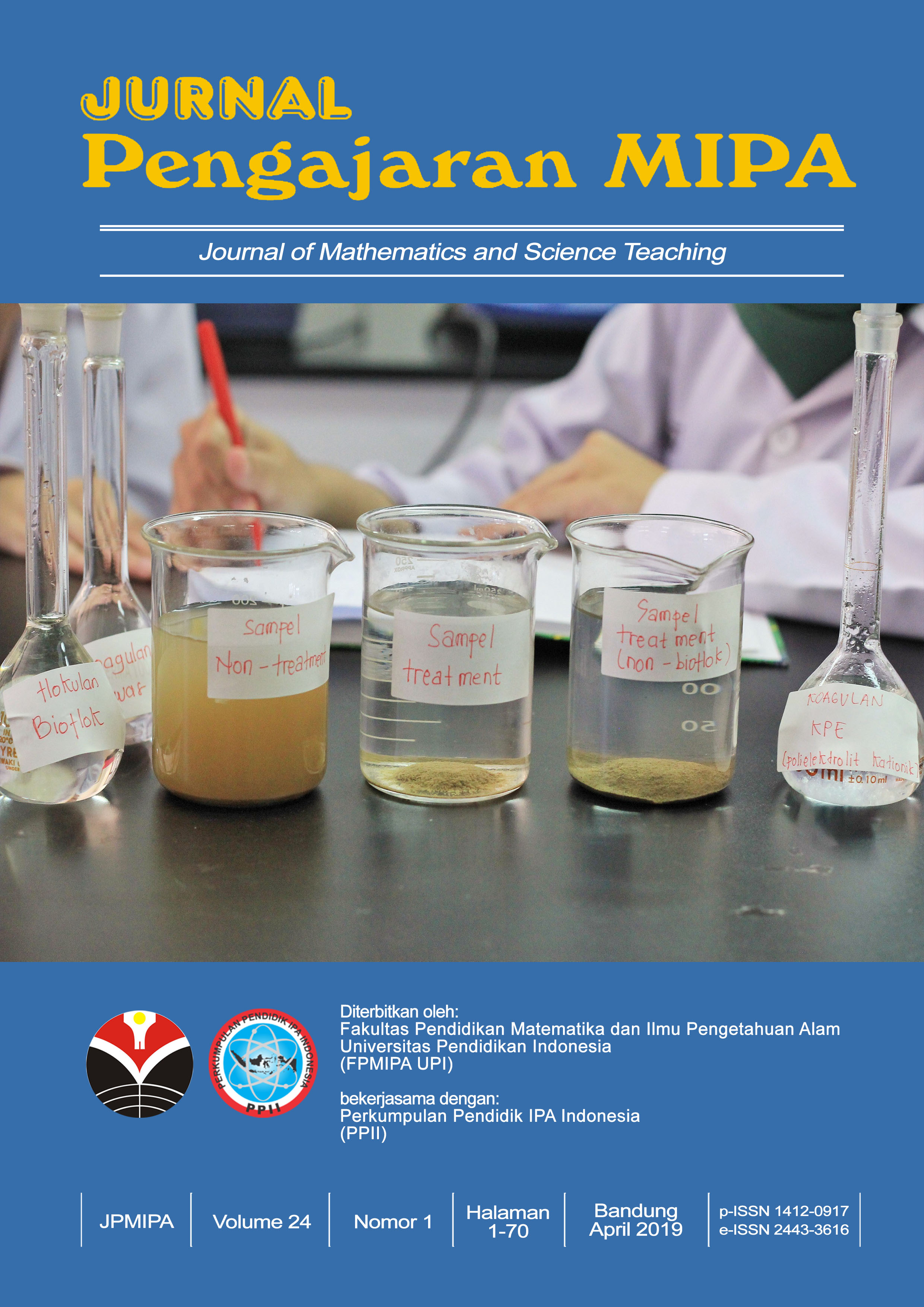BUILDING UNDERSTANDING AND AWARENESS OF ENVIRONMENTAL POLLUTION THROUGH COMIC
Abstract
Keywords
Full Text:
pdfReferences
American Chemical Society. (2012). The Legacy of Rachel Carson’s Silent Spring. Washington, D.C.: American Chemical Society National Historic Chemical Landmarks Program.
Almigbal, T.H. (2015). Relationship between the learning style preferences of medical students and academic achievement. Saudi Medical Journal, 36(3), 349-55.
Andersson, B., & Wallin, A. (2000). Students’ understanding of the greenhouse effect, the societal consequences of reducing CO2 emissions and the problem of ozone layer depletion. Journal of Research in Science Teaching, 37(10), 1096–1111.
Aydin, G. (2015). The effects of computer-aided concept cartoons and outdoor science activities on light pollution. International Electronic Journal of Elementary Education, 7(2), 143-156.
Barrow, M. V. (2012). Carson in cartoon: a new window onto the noisy reception to Silent Spring. Endeavour, 36(4), 156–164.
Choi, S., Niyogi, D., Shepardson, D.P., Charusombat, U. (2009). Do Earth and Environmental Science Textbooks Promote Middle and High School Students' Conceptual Development About Climate Change? Textbooks' consideration of students' misconceptions. Bulletin of the American Meteorological Society, 91(7), 889–898.
Dimitriou, A., & Christidou, V. (2007). Pupils’ understanding of air pollution. Journal of Biological Education, 42(1), 24–29.
Espinosa A.A. (2013) Media cartoons: Effects on concept understanding in environmental education. World Journal of Environmental Research, 3(2), 13–32.
Farmer, J., Knapp, D., & Benton, G. M. (2007). An Elementary School Environmental Education Field Trip: Long-Term Effects on Ecological and Environmental Knowledge and Attitude Development. Journal of Environmental Education, 38(3), 33–42.
McNeill, K. L., & Vaughn, M. H. (2010). Urban High School Students’ Critical Science Agency: Conceptual Understandings and Environmental Actions Around Climate Change. Research in Science Education, 42(2), 373–399.
Myers, G., Boyes, E., & Stanisstreet, M. (2004). School students’ ideas about air pollution: knowledge and attitudes. Research in Science & Technological Education, 22(2), 133–152.
Reinfried, S., Aeschbacher, U., & Rottermann, B. (2012). Improving students’ conceptual understanding of the greenhouse effect using theory-based learning materials that promote deep learning. International Re-search in Geographical and Environmental Education, 21(2), 155–178.
Skamp, K., Boyes, E., & Stanisstreet, M. (2004). Students’ Ideas and Attitudes about Air Quality. Research in Science Education, 34(3), 313–342.
Small, E. (2016). The value of cartoons for biodiversity conservation. Biodiversity, 17(3), 106–114.
Stewart, J., & Clark, T. (2011). Lessons from South Park: A Comic Corrective to Environmental Puritanism. Environmental Communication, 5(3), 320–336.
Shurkin, J. (215). Science and Culture: Cartoons to better communicate science. PNAS, 112 (38) 11741-11742.
Toledo, M.A., Yangco, R.T., & Espinosa, A.A. (2014). Media Cartoons: Effects on Issue Resolution in Environmental Education. International Electronic Journal of Environmental Education, 4(1), 19-51.
DOI: https://doi.org/10.18269/jpmipa.v21i2.57591
Refbacks
- There are currently no refbacks.
Copyright (c) 2016 Universitas Pendidikan Indonesia (UPI)

This work is licensed under a Creative Commons Attribution-ShareAlike 4.0 International License.
JPMIPA http://ejournal.upi.edu/index.php/jpmipa/index is licensed under a Creative Commons Attribution-ShareAlike 4.0 International License
Jurnal Pengajaran Matematika dan Ilmu Pengetahuan Alam (JPMIPA) or Journal of Mathematics and Science Teaching
All rights reserverd. pISSN 1412-0917 eISSN 2443-3616
Copyright © Faculty of Mathematics and Science Education (FPMIPA) Universitas Pendidikan Indonesia (UPI)
View JPMIPA Stats









